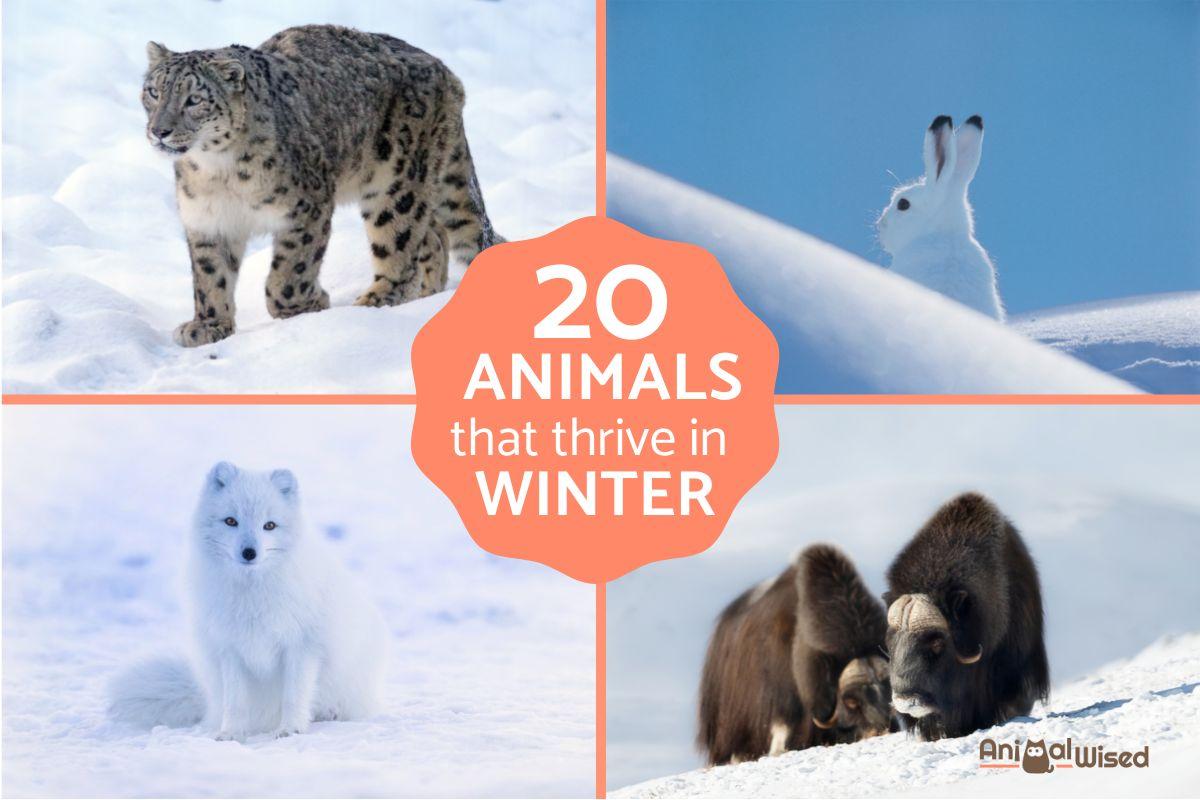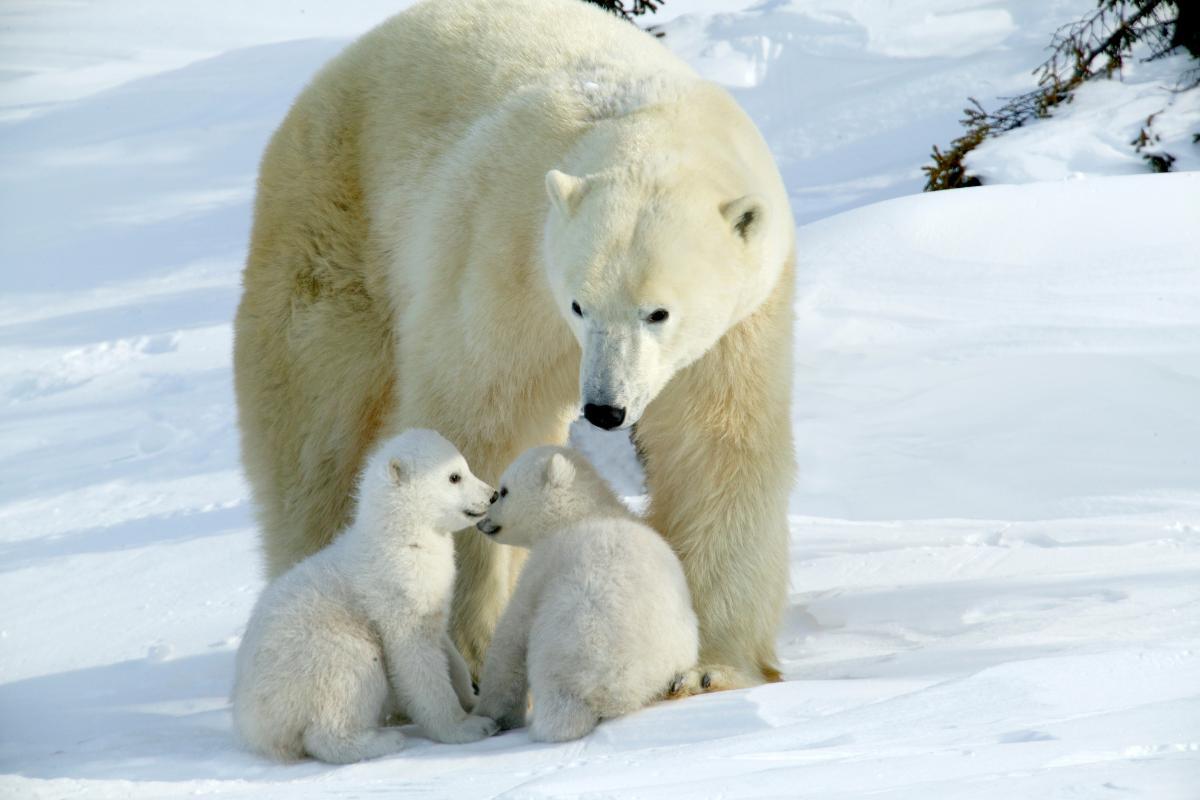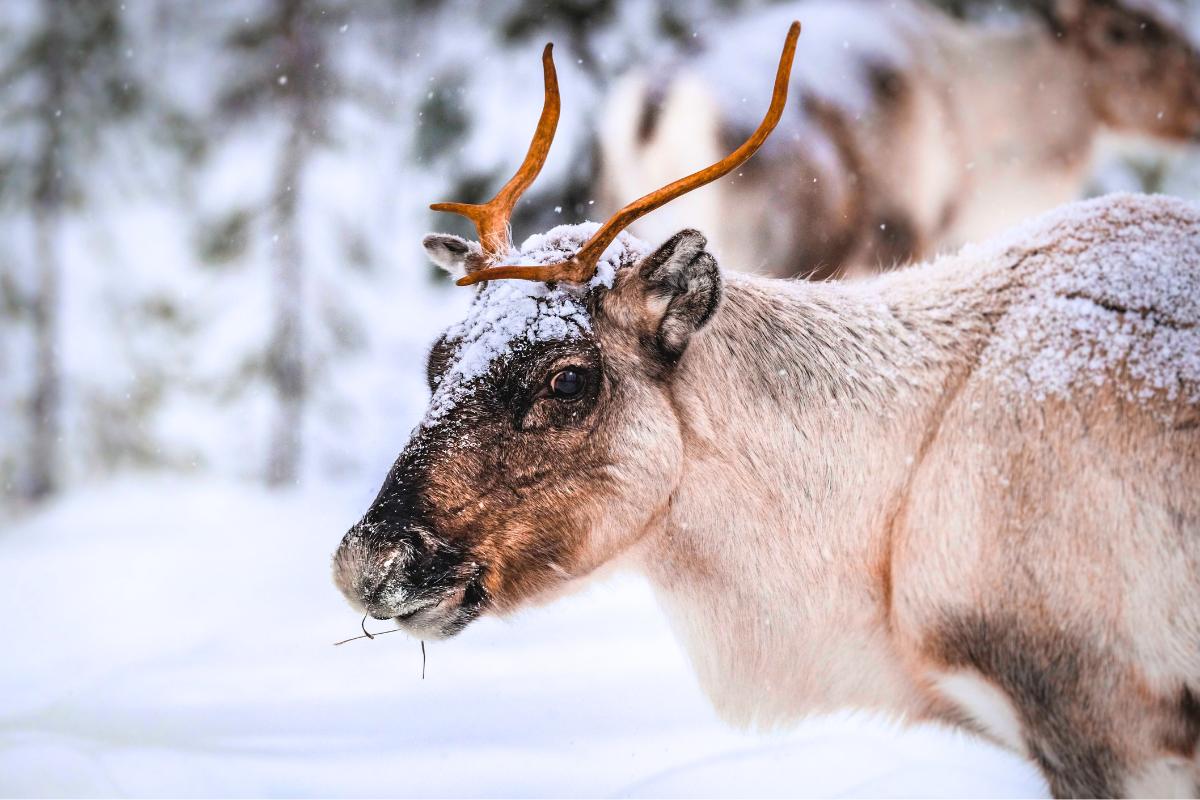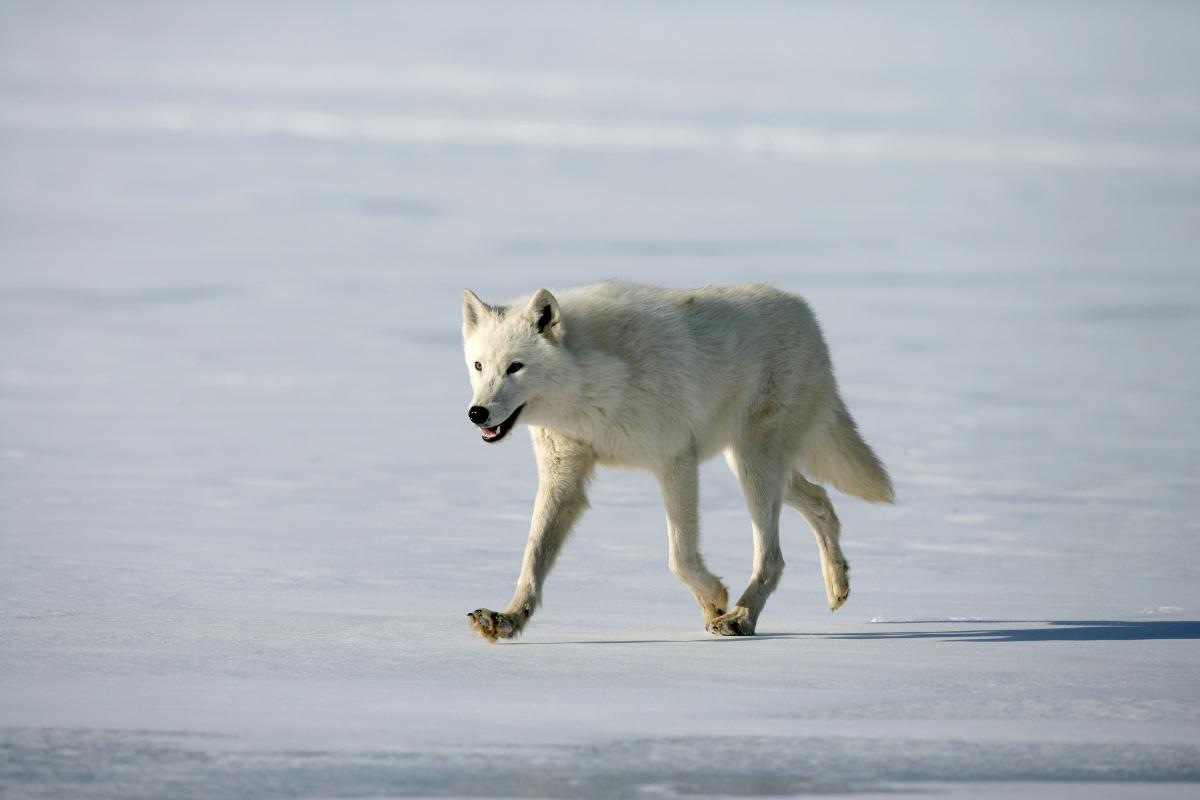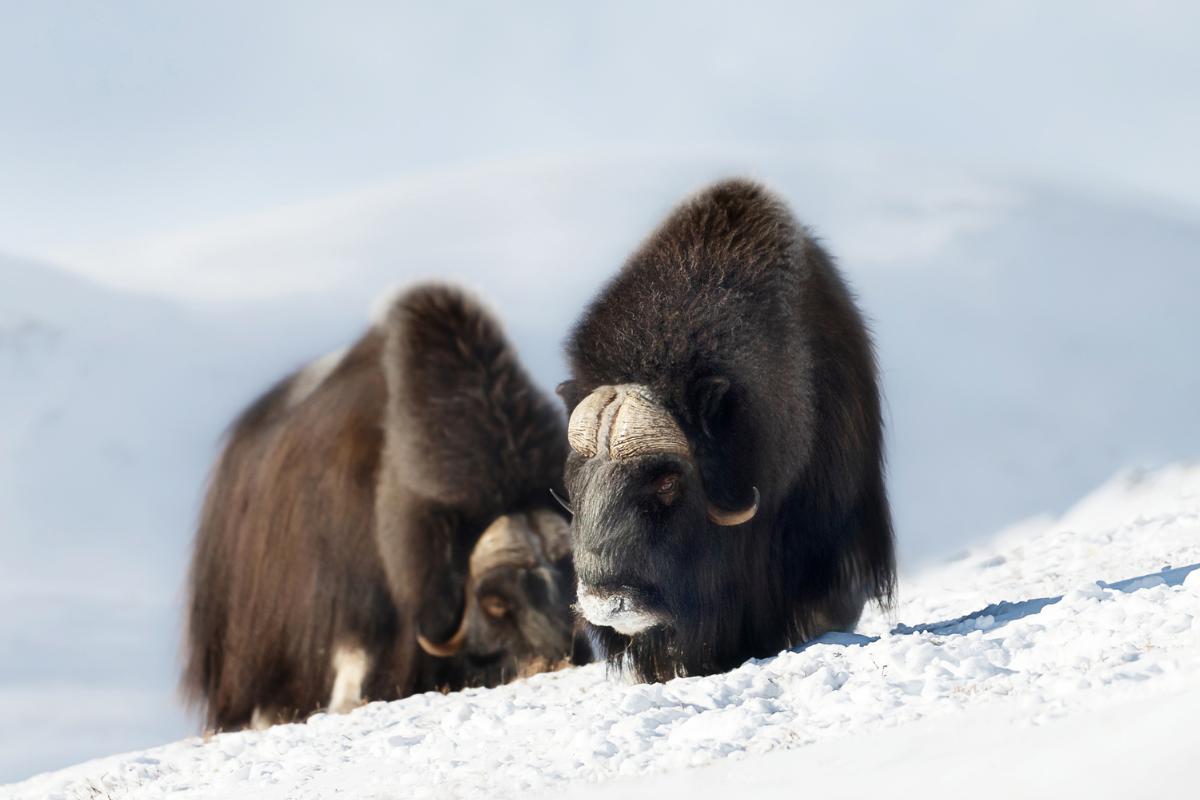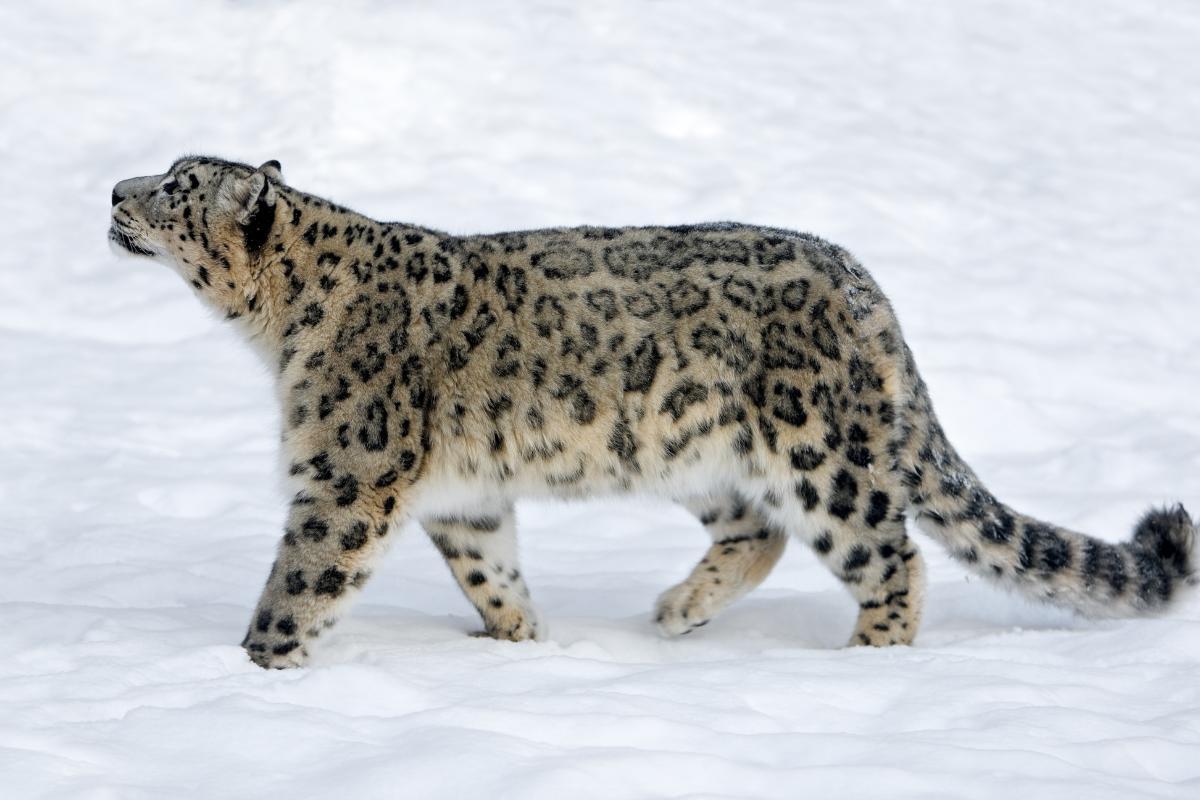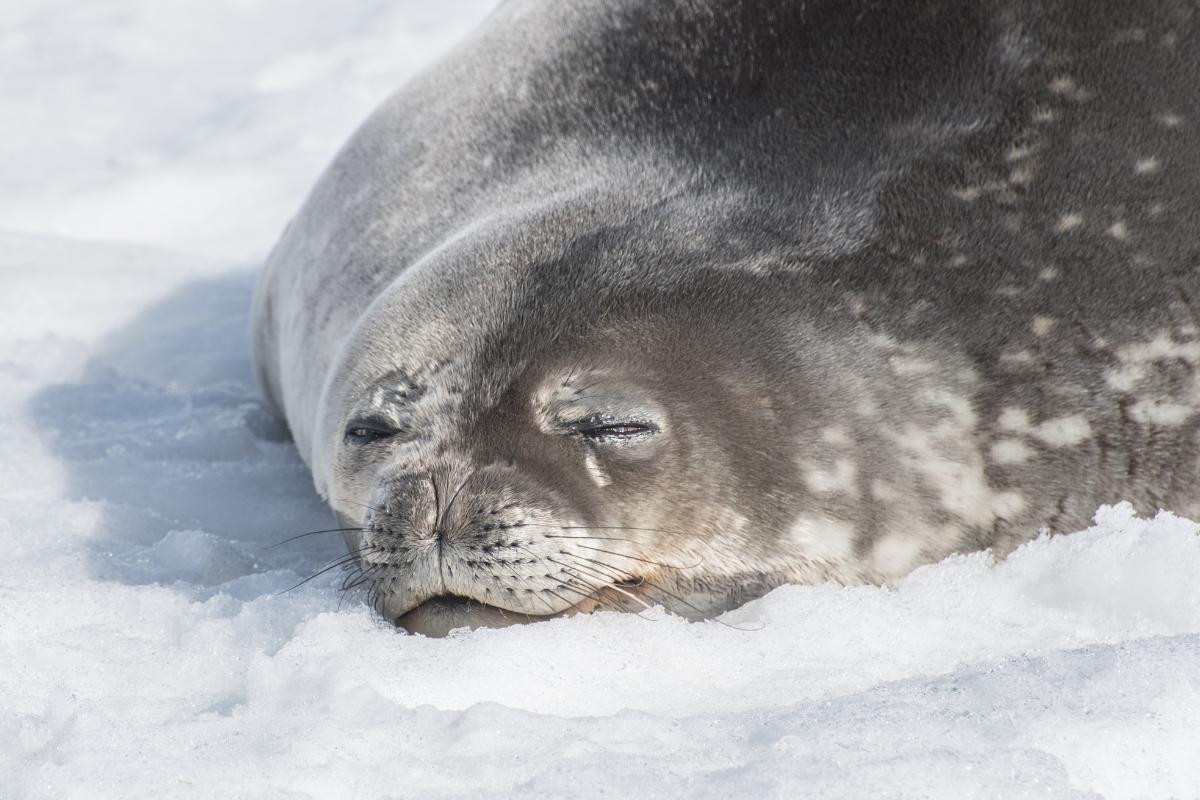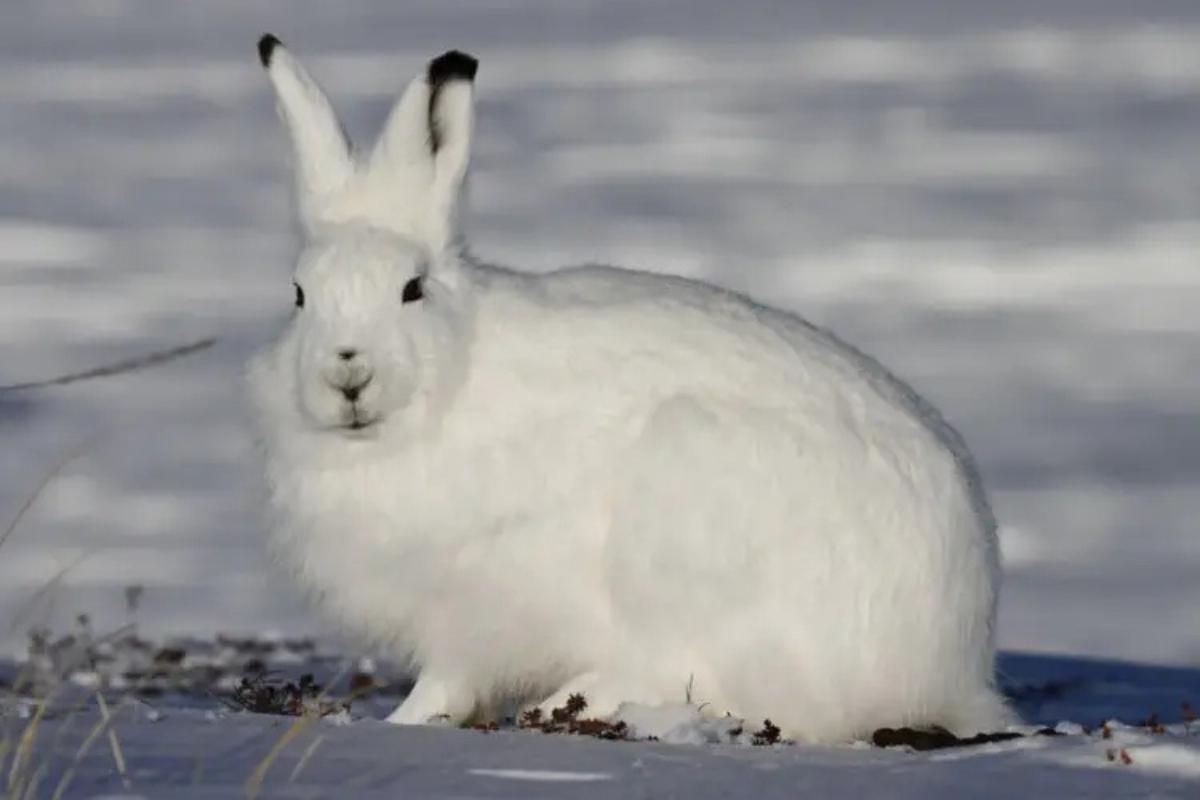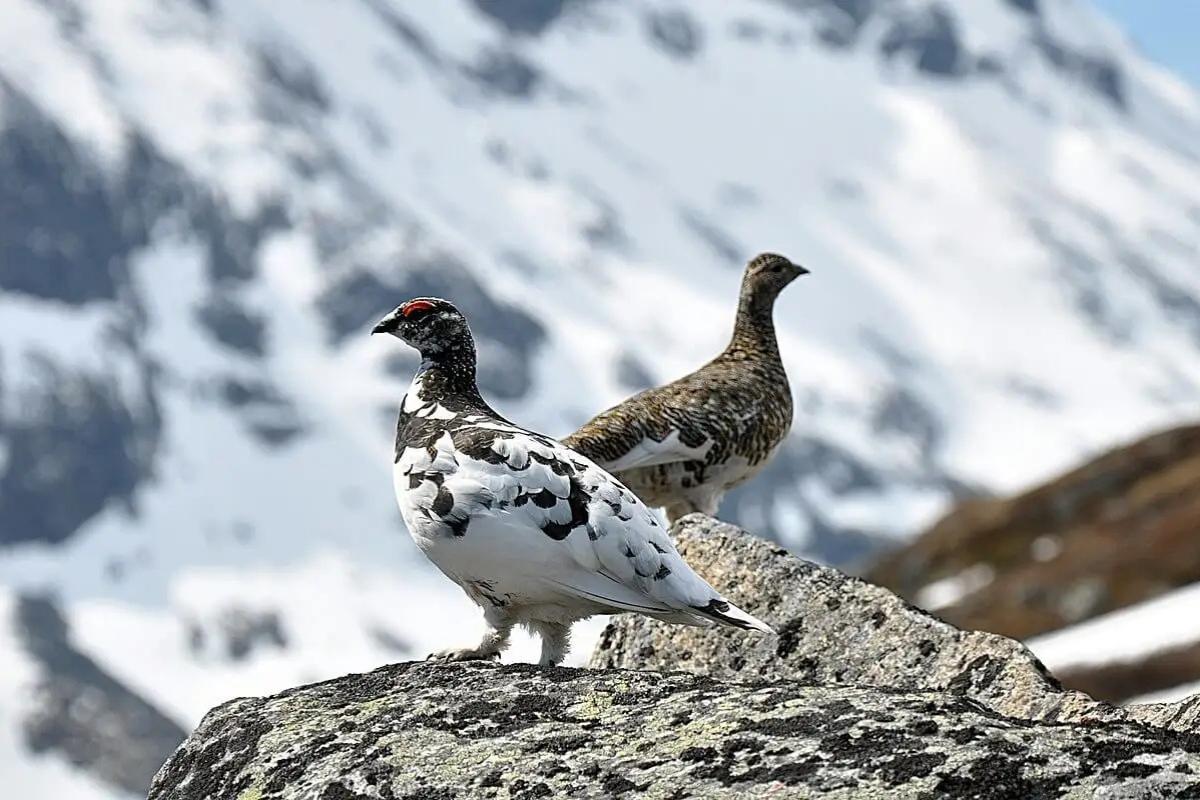Which Animals Thrive in Winter?


In the world's coldest regions, from the Arctic tundra to Antarctic ice sheets and high mountain peaks, animals have developed remarkable ways to survive extreme conditions. Some change their coat colors with the seasons, others huddle in groups for warmth, and many have evolved specialized features like insulating blubber or dense feathers. While many of these animals face challenges from climate change, with several now listed as Vulnerable, others maintain stable populations in their remote habitats.
This article explores 20 species that thrive in winter environments and how they handle life in Earth's most demanding environments.
- Polar bear (Ursus maritimus)
- Arctic fox (Vulpes lagopus)
- Emperor penguin (Aptenodytes forsteri)
- Reindeer (Rangifer tarandus)
- Arctic wolf (Canis lupus arctos)
- Musk ox (Ovibos moschatus)
- Snow leopard (Panthera uncia)
- Weddell seal (Leptonychotes weddellii)
- Arctic hare (Lepus arcticus)
- Rock ptarmigan (Lagopus muta)
- Other winter animals
Polar bear (Ursus maritimus)
Polar bears live across the Arctic's ice-covered waters. Some stay on ice year-round, while others move between seasonal ice and land as temperatures change. They are mostly solitary animals, coming together only to mate or raise their young.
Their bodies evolved for Arctic conditions. A layer of fat and dense fur keeps them warm, while their large paws work for both swimming and walking on ice. Their white fur makes them nearly invisible in their snowy Arctic habitat. These features let them thrive in temperatures that would kill most mammals.
Polar bears rely heavily on seals for food, particularly ringed seals (Pusa hispida). They hunt by waiting near breathing holes in the ice where seals surface. As sea ice forms later and melts earlier each year, bears have less time to build up the fat reserves they need to survive periods without food. In fact, some populations now spend more time on land, forcing them to search for different food sources that don't provide the same nutritional value as their traditional seal diet.
This threat, combined with other human impacts, has led scientists to list them as Vulnerable, a clear sign their population faces risk.
Learn more about how polar bears stay warm in the harshest conditions in this other article.

Arctic fox (Vulpes lagopus)
The Arctic fox thrives in the world's northernmost regions, ranging across the Arctic tundra of North America, Europe, and Asia. They live mainly above the tree line, with some populations using coastal areas that stay ice-free. They form lifelong pair bonds and work together to raise their young.
These foxes adapt to seasonal changes in remarkable ways. Their fur switches color, from white in winter to brown-gray in summer, helping them blend in year-round. Their feet have furry pads and when temperatures plunge, they can curl into a tight ball to protect any exposed skin. This lets them handle temperatures as low as -50°C.
Arctic foxes often follow polar bears across the ice, scavenging leftovers from their seal hunts. They're also food hoarders, which means that when hunting is good, they'll stash surplus eggs, birds, and other prey in the permafrost for leaner times, sometimes creating caches of hundreds of items that they can find again months later.
Unlike polar bears, Arctic fox populations are stable. Scientists list them as Least Concern, meaning they're not currently at risk of extinction.
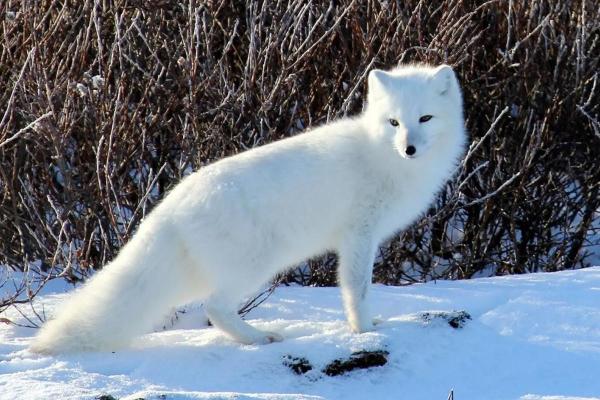
Emperor penguin (Aptenodytes forsteri)
Emperor penguins live all around Antarctica's coast, surviving in some of Earth's most demanding conditions. They handle air temperatures of -40°C and swim in water that's nearly frozen at -1.8°C.
A thick fat layer keeps them warm, while specialized feathers create a waterproof shield. When winter storms hit, they huddle in large groups, taking turns moving between the warmer center and colder edges.
Their bodies can also adjust their metabolism, speeding it up to generate more heat when needed and slowing it down to conserve energy.
Emperor penguins are the only penguin species that breeds during the Antarctic winter. Males balance their egg on their feet for about two months, covered by a fold of skin, while females travel up to 100 kilometers to find food. During this time, the males eat nothing and lose nearly half their body weight.
These adaptations face growing challenges. Scientists now list emperor penguins as Near Threatened, largely because warming temperatures affect their breeding grounds and food supply.

Reindeer (Rangifer tarandus)
Reindeer (or caribou) roam across the Arctic regions, from Alaska through Canada, Greenland, and across Northern Europe to Mongolia. They've made their home in both the open tundra and the northern forests of the taiga, where winters bring intense cold. Some reindeer populations undertake long migrations, traveling hundreds of miles in search of food.
Dense fur and broad hooves let them thrive where other deer species can't. These hooves work like built-in snowshoes, spreading their weight across deep snow and making winter travel possible.
Interestingly, unlike most deer species, both male and female reindeer grow antlers. Not only that, but their eyes change color with the seasons, turning blue in winter to better absorb light in low-light conditions.
Despite their remarkable adaptations, reindeer populations face serious challenges, earning them a Vulnerable conservation status on the global scale. Reindeer aren't just survivors, they're a cornerstone species of the Arctic. Indigenous peoples across the north have relied on them for thousands of years, and their grazing habits help maintain the tundra ecosystem. Their decline signals broader changes in these northern landscapes.

Arctic wolf (Canis lupus arctos)
Arctic wolves live in North America's high tundra. These gray wolf subspecies travel long distances across frozen terrain to find food.
These wolves differ from southern wolves in key ways. Their permanent white coat never changes color, and their slightly smaller body size helps them save energy in the cold. They hunt in packs to catch muskoxen (Ovibos moschatus) and Arctic hares (Lepus arcticus). This type of prey that's large enough to sustain them through long periods between successful hunts.
Their remote habitat makes them hard to study, as they move through the winter darkness when the sun doesn't rise. Unlike other wolf populations that face pressure from human contact, Arctic wolves' isolation helps protect them. Their conservation status is Least Concern.
For a closer look at dogs who are built for winter, check out our guide on snow dog breeds and their unique traits.

Musk ox (Ovibos moschatus)
The muskox lives across Arctic regions of Canada, Greenland, and Alaska, with reintroduced populations in Russia.
These bovines handle tundra conditions through key adaptations. Their wool undercoat (called qiviut) and long outer hair that reaches the ground provide exceptional insulation. Muskoxen's qiviut is considered one of the warmest and most expensive wools in the world. This undercoat is eight times warmer than sheep's wool and finer than cashmere. They shed it naturally each spring, leaving behind fibers that indigenous communities collect and use.
When temperatures drop, they gather in groups, positioning themselves head-to-tail to block wind and defend against wolves.
Their conservation status is Least Concern.
Did you know some animals enter a state of dormancy during winter that’s different from hibernation? Learn more about it in our other article.

Snow leopard (Panthera uncia)
The snow leopard lives in Asia's high mountains, from Afghanistan to Russia, with key populations in the Himalayas and Tibetan Plateau.
These cats adapt to mountain life from 500 to 5,000 meters altitude. Their thick fur, large paws, and unusually long tail provide both warmth and balance - they wrap their tails around themselves when resting in the cold.
Snow leopards have evolved unique features for high-altitude survival. Their enlarged nasal cavities help them warm freezing air before it reaches their lungs, while their extra-large chest capacity lets them get enough oxygen from the thin mountain air.
Unlike other big cats, they can't roar. Instead, they make a distinctive puffing sound called a 'chuff.'
Snow leopards are classified as Vulnerable due to habitat loss, poaching for their fur, and declining prey populations.
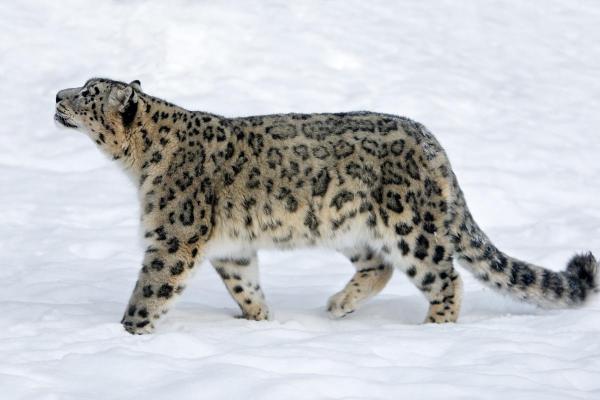
Weddell seal (Leptonychotes weddellii)
The Weddell seal lives around Antarctica's coast. In fact, these seals hold a unique record, they're the southernmost breeding mammal in the world. They gather in colonies on coastal ice sheets and floating ice, where they create breathing holes by grinding the ice with their teeth.
A thick blubber layer lets them dive in -1.8°C waters for up to 80 minutes, reaching depths of 600 meters. They use their sonar-like calls to navigate under ice in complete darkness, and special muscles allow them to collapse their lungs during deep dives, helping them avoid decompression sickness.
They maintain breathing holes in the ice using their teeth, allowing them to access oxygen even in the coldest conditions.
Their population remains stable, and they are classified as Least Concern, thanks to their remote habitat and current protections under the Antarctic Treaty.

Arctic hare (Lepus arcticus)
The Arctic hare lives in Canada and Greenland's tundra regions.
Their body structure adapts perfectly to Arctic life. Unlike other hares, they have shorter ears to prevent heat loss, and their compact body shape helps retain warmth. Their fur shifts from white in winter to gray in summer, matching the changing landscape.
Arctic hares have developed specific behaviors that also helps them to handle extreme cold. They dig shallow pits in snow or soil for shelter, often pressing together in groups of up to 100 to share warmth.
Their powerful hind legs serve multiple purposes, such as digging through snow to reach food, escaping predators at speeds up to 60 kilometers per hour, and striking defensive blows when cornered.
They remain at Least Concern conservation status, largely because their remote habitat faces minimal human disturbance.

Rock ptarmigan (Lagopus muta)
The ptarmigan group includes three main species: the Rock Ptarmigan (Lagopus muta), Willow Ptarmigan (Lagopus lagopus), and White-tailed Ptarmigan (Lagopus leucura). All range across northern regions of America, Europe, and Asia.
These grouse change color with the seasons, that is, white in winter, brown in summer, providing year-round camouflage. Their feathered legs and feet act like natural snowshoes, spreading their weight on snow while keeping their feet warm.
A less obvious adaptation sets ptarmigans apart, they can survive entirely on a winter diet of tough birch and willow buds. Their enlarged, muscular gizzards help them digest this woody fare, while their gut bacteria shifts seasonally to better process different food types.
In the coldest months, they save energy by diving into deep snow, creating burrows where temperatures stay closer to freezing rather than the much colder air above.
These birds remain at Least Concern status due to their wide distribution and stable population numbers.

Other winter animals
Now let's delve into other animals and the adaptations that allow them to thrive in the harshest winter conditions.
- Ring-tailed lemur (Lemur catta): uses their tail like a scarf, wrapping it around their body while huddling with others.
- Sea otter (Enhydra lutris): stays warm with the densest fur in nature, up to a million hairs per square inch, replacing the need for blubber.
- Gyrfalcon (Falco rusticolus): survives Arctic cold with extra-thick foot feathers and special nasal structures that warm incoming air.
- Moose (Alces alces): moves through deep snow on long llegs,while hollow hair traps warm air for insulation.
- Bearded vulture (Gypaetus barbatus): manages high altitudes using specialized blood vessels in their feet and dense underfeathers.
- Antarctic icefish (Chionodraco hamatus): produces antifreeze proteins that keep their blood flowing below freezing point.
- Boreal woodland caribou (Rangifer tarandus caribou): combines hollow, insulating hair with broad hooves that work as snowshoes.
- Eider duck (Somateria mollissima): uses triple-layered feathers and special foot circulation for Arctic swimming.
- Mountain cottontail rabbit (Lepus timidus): grows white winter fur and furry foot pads for snow travel.
- Red squirrel (Tamiasciurus hudsonicus): adds ear tufts and thickens their fur by half for winter warmth.
For more on animals that survive in extreme conditions, check out our exploration of the fascinating wildlife in Antarctica.
If you want to read similar articles to Which Animals Thrive in Winter?, we recommend you visit our Facts about the animal kingdom category.
- Myers, P., R. Espinosa, CS Parr, T. Jones, GS Hammond, and TA Dewey. (2024). The Animal Diversity Web. Available at: https://animaldiversity.org.
- IUCN (2024). IUCN Red List of Threatened Species. Version 2024-2. Available at: https://www.iucnredlist.org





